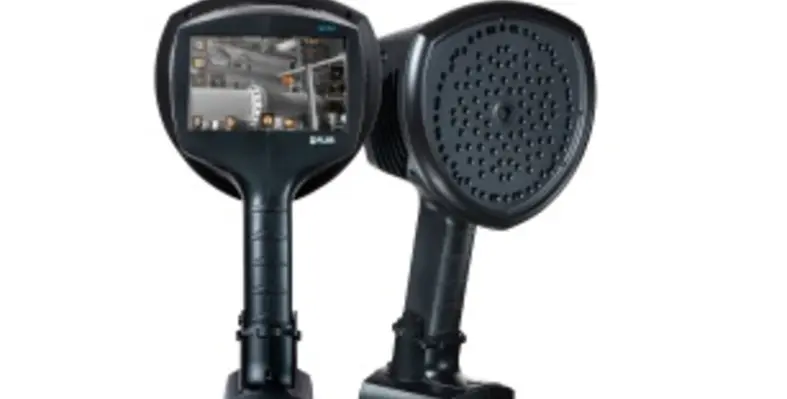Teledyne FLIR has released its latest acoustic imaging camera to detect compressed air leak
Called the Si 124-LD Plus, the camera offers improved user interface and software capabilities. This increases its capacity to locate tiny air compressor leaks more quickly and accurately.
The Si124-LD Plus offers leak quantification both on camera and in software, enabling inspectors to better prioritise repairs and defend costs. The camera can also be fully integrated with the FLIR Thermal Studio, a software that allows operators to import acoustic images from the camera to the desktop software suite. Users can then easily edit and analyse acoustic imagery.
The Si124-LD Plus also consists of a number of enhancements such as:
AutoFilter: automatically determines the best filter to use for revealing small leaks that might otherwise remain undetected, all the while speeding up inspections by eliminating unrelated background noise.
AutoDistance: automatically measures the distance to the leak for real-time, reliable, leak-rate estimates up to five metres (16 feet) away from the source.
Continuous Auto-Correct: improves leak detection performance to find even smaller air leaks from 0.016 l/min to 0.004 l/min (0.016 l/min = 0.00057 cfm, 0.004 l/min = 0.00014 cfm).
The Si124-LD Plus includes two rechargeable batteries with a battery recharger, a neck strap, and a USB memory stick included within a hard case for safe, easy transportation to and from the job site.
Rob Milner, director of global business development at Teledyne FLIR, said, “The Si124 line of acoustic imaging devices has already proved to decrease inspection time 10-fold, and now with additional software features such as AutoDistance and AutoFilter with the ‘plus’ version, industrial inspectors will enjoy even greater efficiency and the ability to detect even smaller leaks than what was once possible.
“These leaks, if not detected and remedied, can create not only dangerous conditions for buildings and industrial sites but can lead to costly repairs and unnecessary increases in energy costs.”





